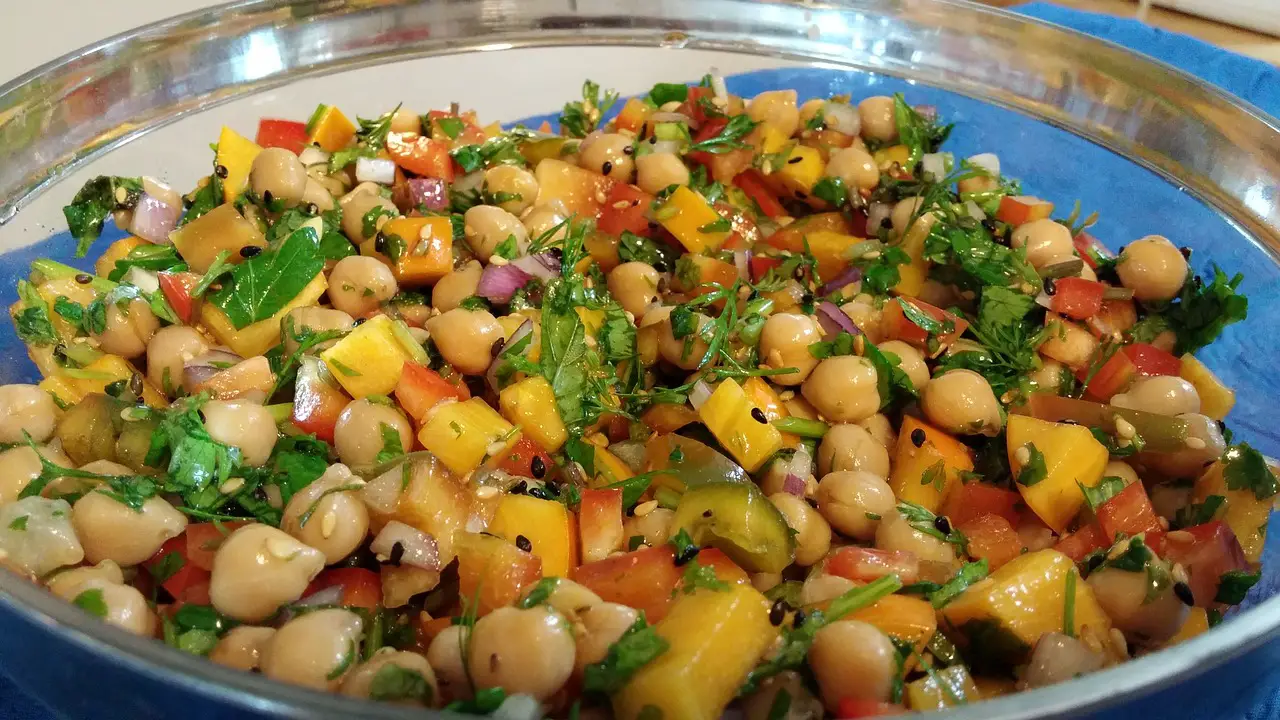What are the Differences Between Cannellini Beans and Chickpeas
When thinking of different types of beans, you might have pondered the differences between cannellini beans and chickpeas. These two types of beans are some of the most common options in today’s market.
They are also extremely versatile, making it easy to incorporate them into your home cooking routine. Cannellini beans and chickpeas are both commonly referred to as legumes because they grow inside a pod known as a “legume”.
In addition, both of these types of beans can be used interchangeably in certain recipes; however, there are also some key differences that you should be aware of when preparing to cook with either one.
This article will outline some general information about each type of bean and their similarities and differences so that you can make an informed decision whenever incorporating either one into your diet.
What is a Cannellini Bean?
Cannellini beans are medium-sized white beans that are native to Italy. They are often called white kidney beans, as well, but there is no relationship between them and kidney beans.
They are used in many different types of dishes, including soups and salads. Cannellini beans are one of the most popular types of beans consumed worldwide.
They have a creamy texture and mild taste that makes them easy to incorporate into a variety of dishes. They are also extremely nutritious and packed with vitamins, minerals and fiber.
Cannellini beans are usually used in recipes that call for cooked beans. You can purchase canned or dried cannellini beans, or you can cook them yourself by soaking them in water overnight followed by boiling them until they are soft.
What is a Chickpea?
Chickpeas, also known as garbanzo beans, are a type of legume native to Asia and the Middle East. They are cultivated in a variety of colours, including red, brown, and yellow.
They are a common ingredient used in many different types of dishes and can be found in both savoury and sweet recipes. Chickpeas are often used in vegetarian and vegan dishes, stews, curries, soups, and more.
They are also commonly used to make hummus, a popular dip that is often served with raw vegetables. You can purchase canned or dried chickpeas or cook them yourself by soaking them in water overnight followed by boiling them until they are soft. You can also use a pressure cooker to speed up the process.
Differences Between Cannellini Beans and Chickpeas
Cannellini Beans and Chickpeas are both legumes and share many similarities.
Both are packed with protein and fibre and both can be used interchangeably in certain recipes. However, there are also some key differences between the two which are outlined below.
Texture – When it comes to texture, the biggest difference between the two is that chickpeas are firmer and more starchy than cannellini beans.
While both are creamy in texture, chickpeas have a softer and creamier texture than cannellini beans.
Colour – While both types of beans come in a variety of colours, the most common is a white or creamy colour. – Taste – While both beans have a mild and creamy taste, they vary slightly.
Cannellini beans have a slightly milder taste than chickpeas, with a creamy texture that makes them easy to add to many different types of dishes.
Preparation – While both beans can be used interchangeably in certain recipes, they also have different requirements when it comes to cooking.
For example, chickpeas must be cooked until they are soft whereas cannellini beans can be eaten raw or cooked.
Nutritional Value of Cannellini Beans Cannellini beans are a great source of protein, carbohydrates, fibre, and several vitamins and minerals. One cup of cooked cannellini beans provides about 5 grams of protein, which helps to build and repair muscle, maintain bone health, regulate blood sugar levels, and produce the hormones that break down fat cells.
Carbohydrates give us energy, and fibre is found in the skin of the beans and helps to move food through the digestive system and prevent constipation. Cannellini beans are also a good source of iron, which is important for transporting oxygen throughout the body and preventing anemia. Additionally, they are a good source of magnesium and potassium, which help regulate blood pressure.
Nutritional Value of Chickpeas
Chickpeas are a great source of protein, fibre, and several vitamins and minerals. One cup of cooked chickpeas provides about 7 grams of protein, which helps to build and repair muscle, as well as maintain bone health. They are also a good source of iron, which is important for transporting oxygen throughout the body.
Chickpeas are also a good source of fibre, which helps to move food through the digestive system and prevent constipation. Additionally, they are a good source of magnesium and potassium, which help regulate blood pressure and protect against heart disease and strokes.
Chickpeas are also a good source of vitamin B3, which helps to break down fats and regulate blood sugar levels, as well as vitamin B6 and folate, which help to lower the risk of heart disease.
Summary
As you can see, there are some key differences between cannellini beans and chickpeas. While both are commonly used in different types of recipes, there are some specific advantages that one may have over the other depending on the dish you are making.
Cannellini beans are creamy in texture and have a more mild taste than chickpeas, which are firmer in texture and have a richer taste. When it comes to preparation, chickpeas must be cooked until soft whereas cannellini beans can be eaten raw or cooked.
Cannellini beans and chickpeas are both great sources of protein and fibre and are commonly used in vegetarian and vegan dishes. They are also extremely nutritious and packed with vitamins, minerals, and fibre.

